Introduction of Farming in Kenya
We’ve all been there. You stand at the edge of your shamba, watching your healthy animals, and your heart is full of hope. But at the end of the month, you see the bill on feed, and your heart sinks. Here in Kenya, every farmer knows this struggle clearly: how do we keep our animals thriving while controlling the rising costs?
The good news is, there is a way forward. The answer is in our own hands, and it starts with making our own animal and poultry feed. A feed pellet machine, which is a simple piece of equipment, is changing the game on farms all across Kenya. This is about more than just saving money. It’s about control, quality, and building a truly resilient future. Let’s talk about how this machine can become the most valuable partner on your farm.
Understanding Feed Pellet Machine in Kenya
Definition and Function
Simply put, a feed pellet machine in Kenya is a tool that takes your raw ingredients like maize flour, wheat bran, and fishmeal, and presses them into small, solid pellets. Its core mission is to create a complete, balanced feed that is easy for your animals to eat and digest, and is not wasted. It’s like the central kitchen for your farm, carefully preparing every meal for your livestock.
The Working Principle
The process might sound complex, but it’s just like cooking, one step at a time.
First step is grinding and mixer.You have to grind all your ingredients into a fine powder with feed grinder machine so the nutrition is even. Then comes conditioning. We add a bit of steam or molasses, much like adding water to knead dough for mandazi, to help the particles stick together.
The next key step is pelleting. The conditioned mix is fed into a chamber with a metal plate full of small holes (we call this a “die”). Powerful rollers force the mix through these holes, creating hot pellets.
The final step is cooling and screening. The hot pellets are cooled to become hard, and any dust is screened out, leaving you with a perfect, storable product.
Machine Categories
When it comes to feed pellet machine types in Kenya, you’ll mainly find two:
Flat Die Pellet Mills:
You can think of this like a powerful, hand-cranked maize grinder, but stronger. Its die is a flat, horizontal disc, and rollers move over the top. This design is simple and affordable, making it perfect for smallholder farmers in Kenya or those just starting out. Flat die pellet mill a reliable workhorse to get you into the game.
Ring Die Pellet Mills:
Ring die pellet mill is like the giant industrial mixer in a large bakery. Its die is a vertical ring that rotates, with rollers on the inside. Its output is huge and it’s highly efficient, making it the heart of large commercial farms and feed mills.
You also have the choice between mobile units, often powered by a diesel engine, which are a lifesaver in remote areas with unreliable KPLC power, and stationary units that run on electricity from the grid.
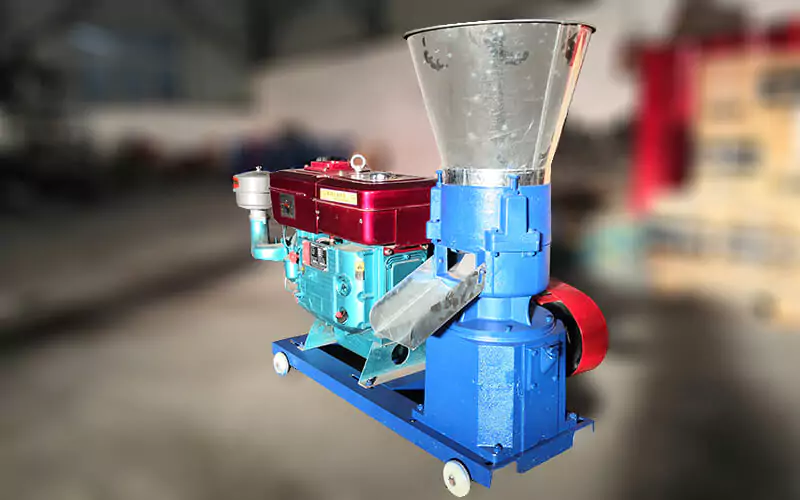
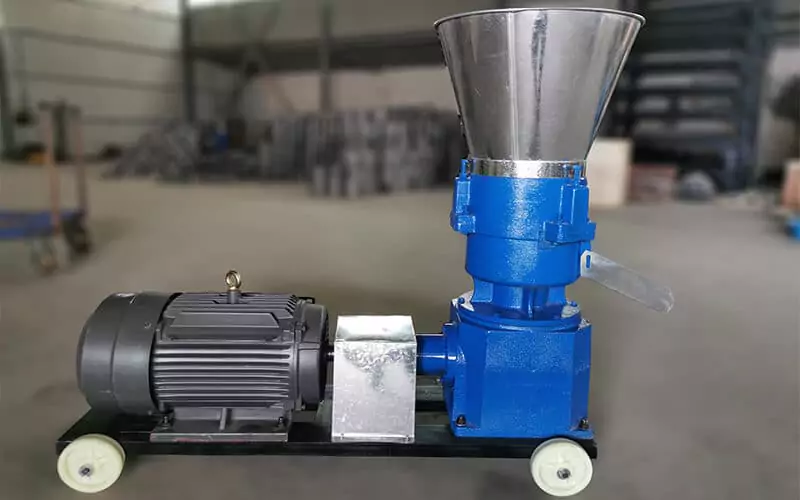
Models and Suppliers of Feed Pellet Machine in Kenya
Small-Scale & Household Feed Pellet Machines
For most of us farmers in Kenya, a small flat die feed pellet machine is the sweetest starting point. It can handle the needs of a few dairy cows or a flock of a thousand chickens, and it won’t force you to break the bank. It’s also relatively simple to operate and repair, which is something you can often handle yourself.
Commercial & Industrial Feed Pellet Machines
If you run a large animal farm or poultry farm and need tons of feed every day, then a ring-die mill is what you need. It is a production monster that ensures your feed supply never runs dry. But if you run a fish farm, you need a fish feed machine in Kenya.
Local vs. Imported Brands
In Kenya, this is a very real choice. In places like Nairobi’s Kariobangi or the industrial areas of Nakuru, you can find many skilled Jua Kali artisans. The machines they build are strong and the price is fair. I know a farmer whose local machine has been running for eight years with almost no problems, aside from replacing the die.
On the other hand, imported brands (mostly from China or Europe) offer more advanced technology and automation. But you have to ask a very practical question: When my machine breaks on a Saturday morning, can I find a technician and a spare part here in Kenya? Sometimes, a local supplier you can call anytime is worth more than a low price from far away.
Choosing the Right Feed Pellet Machine in Kenya
Capacity & Production Scale
Before you choose, sit down and do the math. The question isn’t what the machine can produce, but what your animals need to eat. How much concentrate does one dairy cow eat a day? One laying hen? Calculate the total, then choose a machine that can comfortably produce that amount in a few hours. Remember to leave a little room for future growth.
Raw Material Compatibility
Your machine has to be able to “eat” your ingredients. Feed in Kenya is mostly maize-based, but you might also use sunflower cake or cottonseed cake. These ingredients have different oil and fiber content.
I once made the mistake of thinking any machine could handle anything. The result? A friend’s cheap machine got completely clogged by his high-oil ingredients. So, talk to the supplier about your formula to make sure their machine can handle it well.
Energy Efficiency & Cost-Effectiveness
Electricity bills are a reality we all face each month. When choosing a motor, don’t just look at the horsepower; look at its energy efficiency. An efficient machine can save you a huge amount on your power bill in a year. As for the return on investment (ROI), don’t be scared by fancy formulas.
You just need to calculate: (Monthly savings on feed – monthly cost of raw materials and power) x 12 ÷ Total cost of the machine. This will give you a clear idea of how long it will take for this investment to pay for itself.
Build Quality & Durability
A good machine should be an inheritance, not a consumable. You need to inspect its key parts: the die and the rollers, it is like you would inspect a champion bull. Ask the supplier what kind of steel they are made from.
Good alloy steel can make them last many times longer. Knock gently on the machine’s body; listen for a solid sound. These small details determine how long it will serve your farm.
Local Support & Technical Service
I cannot stress this enough. Before you pay, ask about the supplier’s technical support. Do they offer on-site installation and training? Do they have a stock of spare parts in Kenya? A reliable supplier sells you more than a machine; they sell you a long-term commitment and peace of mind.
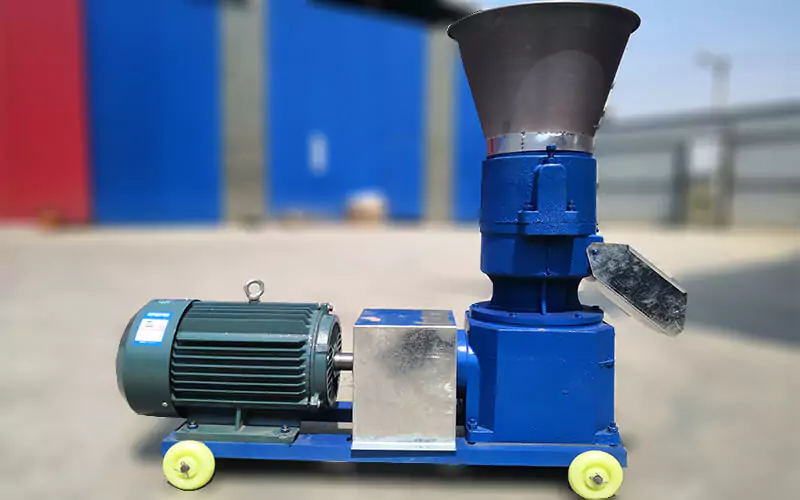
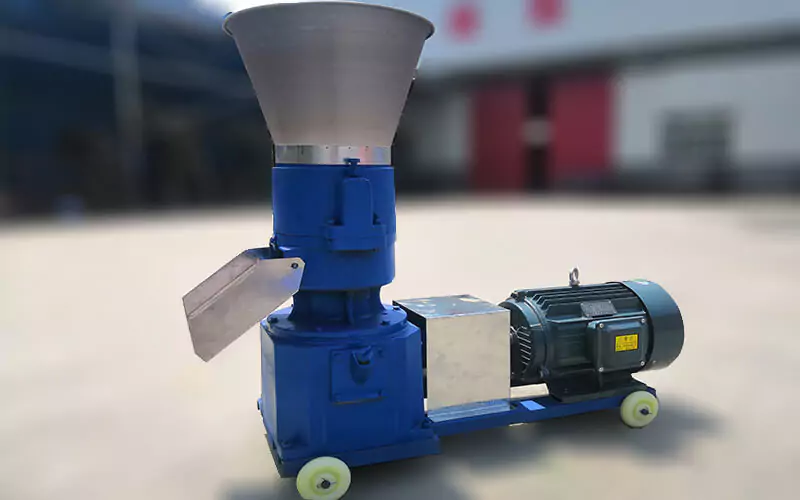
Core Benefits of On-Farm Feed Production
Better Feed Conversion Ratio (FCR):
This is a technical term, but it asks a simple question: for every kilo of feed an animal eats, how many kilos of growth or milk do you get? Good pellets are easier to digest and dramatically improve this ratio. That means less waste and higher output.
Consistent Quality:
You no longer have to worry that the feed you buy this time is different from the last. Every single pellet you make has the exact same nutrition. For picky animals, this ensures they get a complete diet.
Real Savings:
This is the most direct benefit. Making your own feed can be 30% cheaper, or even more, than buying finished feed. Over time, that adds up to a huge amount of money that you can use to expand your cowshed or chicken house.
Farm Biosecurity:
The most painful stories I’ve heard are about a whole flock being wiped out by a disease that came in with outside feed. When you make your own, you build a strong firewall at your farm gate, lowering this risk to almost zero.
Common Challenges and Solutions
- Machine Blockages: If your pellets are sticky like Ugali or crumbly like sand, it’s usually a moisture problem. Here’s an insider tip: grab a handful of your mixed raw material and squeeze it hard. If it just barely forms a clump that breaks apart with a touch, the moisture is perfect. Too dry? Add a little water. Too wet? Add some wheat bran.
- Die and Roller Wear: These are consumable parts, like tires on a car. But you can make them last longer. After work each day, run a mix of bran and oil through the machine. This cleans out the holes and prevents rust.
- Dust Issues: Safety first. In a poorly ventilated room, dust can even be a fire hazard. Keep your workspace well-ventilated. A friend of mine learned this the hard way after a small fire caused a big loss. Never ignore this issue.
- Power Problems: In Kenya, we all know this story. Unreliable power is normal. A good voltage stabilizer is not an option; it’s a necessity. For a serious farmer, a backup generator ensures you can keep producing when your neighbors are sitting in the dark.
Kenyan Regulations and Standards
- KEBS Feed Safety Standards: The standard rules from the Kenya Bureau of Standards (KEBS) are not there to cause trouble; they are there to protect our entire industry. They make sure the feed we make is safe. It’s simple: use clean ingredients, prevent mold, and don’t use any banned substances. This is the promise that you make to your customers.
- Environmental Requirements: A responsible farmer runs a clean farm. Take care of waste oil and materials, and don’t let dust bother your neighbors. This isn’t just about following rules; it’s about leaving a clean piece of land for our children.
- Import Duties and Certification: If you choose to import a feed pellet making machine, remember to calculate the full cost, including taxes and customs clearing fees. This can be a significant amount. A good clearing agent can save you a lot of headaches including money.
The Future of Feed Production in Kenya
- Automation and Smart Controls: Technology is coming to our farms. New machines now come with small control screens that can automate many tasks. Imagine checking on your machine from your phone while you’re at the market. This was unthinkable before.
- Sustainable Feed Ingredients: We cannot rely on maize or soybean forever. Smart people in Kenya are researching insect protein and vitamins from the black soldier fly, or using farm by-products like pineapple waste. This is our future—cheaper and better for the environment.
- Financing Opportunities: Where does the money come from? Don’t forget the resources around you. Many Saccos and banks (like Equity Bank and KCB) have special loans for agriculture. Talk to your county agricultural officer; they usually know about the latest government subsidies.
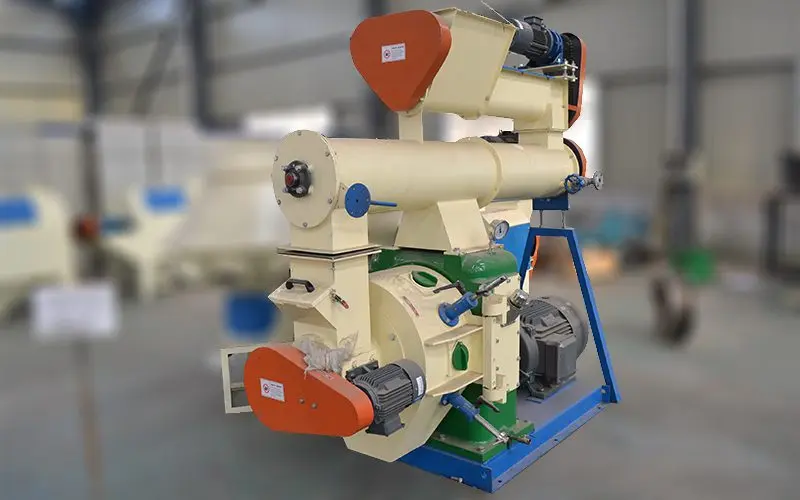

Conclusion
At the end of the day, this machine is more than just steel and a motor. It is your weapon for taking back control of your farm and fighting against market changes. It is the tool that turns your sweat into real income.
The real victory isn’t in the shillings you save on a spreadsheet. It’s when the heavy rains come, and you no longer worry about feed trucks getting stuck. It’s when you see your children drinking the purest milk from your own healthy cows. When you can proudly tell someone, “These healthy chickens? I made every single bite of their food myself.” This is our pride as farmers.
If you are ready, go talk to suppliers. Go see a machine run. Feel the warm pellets in your own hand. This is the first step toward a stronger farm.
Frequently Asked Questions
What is the price range of feed pellet machine in Kenya?
The price varies widely. A simple, sturdy flat-die machine from a Jua Kali artisan might start from KSh 150,000. An imported, mid-sized machine could range from KSh 500,000 to KSh 1,500,000. A large, industrial-scale ring-die system will cost several million shillings. Always balance the purchase price with long-term value and support.
How do I determine the right capacity for my farm’s needs?
It’s simple math. First, calculate the total weight of feed all your animals consume in one day. For example, 500 laying hens need about 60 kg per day. A good rule is to choose a machine that can produce your total daily feed in just 2 to 3 hours. This is efficient and gives the machine time to rest.
Which raw materials are not recommended for standard pellet mills?
Standard mills don’t like materials that are extremely oily or have very long, tough fibers by themselves. For example, pure cottonseed cake (with very high oil) or long, unchopped dry grass can cause blockages. The best solution is to mix them with a base ingredient like maize flour, and the problem is solved.
What are the best practices for daily maintenance?
Daily maintenance is simple but very important. After each use, clean the die and rollers. Check for any loose bolts or belts. The most important rule, which some learn the hard way: always, always disconnect the power before doing any maintenance. Safety is always first.
